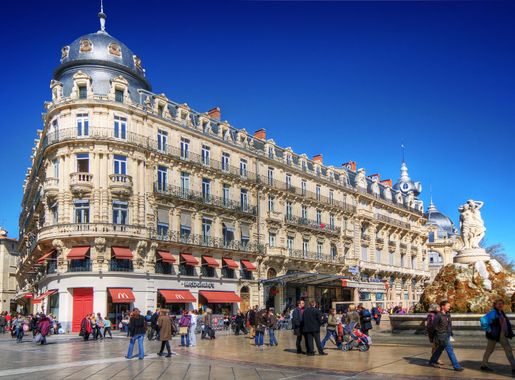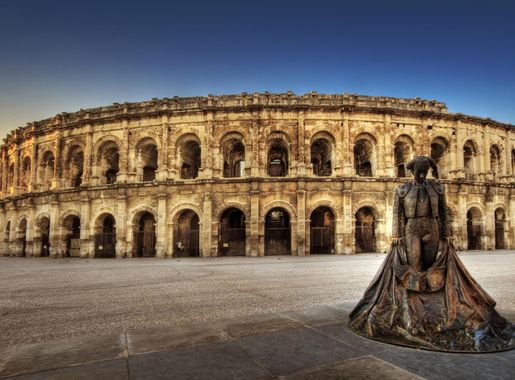
Enchanting Shores of the Languedoc Coast
Discover the Languedoc Coast: A blend of historic charm, stunning beaches, and culinary delights along France's Mediterranean shores.
The Languedoc Coast in France is a treasure trove of natural beauty, historic charm, and delightful culinary experiences. Stretching along the Mediterranean, this coastal gem offers a blend of sandy beaches, scenic lagoons, and vibrant seaside towns. From the bustling port city of Sète to the serene landscapes of Camargue, the Languedoc Coast promises a diverse and enriching experience for every traveler. The region is steeped in history, with ancient Roman ruins, medieval castles, and charming old towns waiting to be explored. Visitors can wander through the narrow streets of Carcassonne, a UNESCO World Heritage site, or discover the Roman amphitheater in Nîmes. The historical richness of the Languedoc Coast is complemented by its vibrant cultural scene, with numerous festivals, markets, and local events celebrating the unique heritage of the area. For nature lovers, the Languedoc Coast is a paradise of outdoor activities. The coastal lagoons and nature reserves are perfect for bird watching, hiking, and cycling. The Étang de Thau, one of the largest lagoons in the region, is renowned for its oyster farming, providing a unique opportunity to savor fresh seafood while enjoying the stunning views. The region's beaches, such as those in Cap d'Agde and La Grande-Motte, offer crystal-clear waters and a range of water sports for adventure enthusiasts. The culinary delights of the Languedoc Coast are not to be missed. The region is famed for its wines, particularly those from the Languedoc-Roussillon vineyards, which are among the oldest in the world. Local markets burst with fresh produce, cheeses, and baked goods, making it a food lover's dream. Dining in the Languedoc Coast often means enjoying meals al fresco, with the gentle sea breeze and picturesque views adding to the experience.
Local tips in Languedoc Coast
- Visit during the off-peak season (April-June or September-October) for fewer crowds and pleasant weather.
- Explore local markets early in the morning to get the freshest produce and avoid the midday heat.
- Rent a bike to explore the coastal trails and nature reserves at your own pace.
- Try the local seafood, especially oysters from the Étang de Thau, for an authentic taste of the region.
- Stay hydrated and wear sunscreen, as the Mediterranean sun can be quite strong.
Enchanting Shores of the Languedoc Coast
The Languedoc Coast in France is a treasure trove of natural beauty, historic charm, and delightful culinary experiences. Stretching along the Mediterranean, this coastal gem offers a blend of sandy beaches, scenic lagoons, and vibrant seaside towns. From the bustling port city of Sète to the serene landscapes of Camargue, the Languedoc Coast promises a diverse and enriching experience for every traveler. The region is steeped in history, with ancient Roman ruins, medieval castles, and charming old towns waiting to be explored. Visitors can wander through the narrow streets of Carcassonne, a UNESCO World Heritage site, or discover the Roman amphitheater in Nîmes. The historical richness of the Languedoc Coast is complemented by its vibrant cultural scene, with numerous festivals, markets, and local events celebrating the unique heritage of the area. For nature lovers, the Languedoc Coast is a paradise of outdoor activities. The coastal lagoons and nature reserves are perfect for bird watching, hiking, and cycling. The Étang de Thau, one of the largest lagoons in the region, is renowned for its oyster farming, providing a unique opportunity to savor fresh seafood while enjoying the stunning views. The region's beaches, such as those in Cap d'Agde and La Grande-Motte, offer crystal-clear waters and a range of water sports for adventure enthusiasts. The culinary delights of the Languedoc Coast are not to be missed. The region is famed for its wines, particularly those from the Languedoc-Roussillon vineyards, which are among the oldest in the world. Local markets burst with fresh produce, cheeses, and baked goods, making it a food lover's dream. Dining in the Languedoc Coast often means enjoying meals al fresco, with the gentle sea breeze and picturesque views adding to the experience.
When is the best time to go to Languedoc Coast?
Iconic landmarks you can’t miss
Cité de Carcassonne
Discover the enchanting Cité de Carcassonne, a historical fortress that offers a captivating glimpse into medieval France with stunning architecture and rich culture.
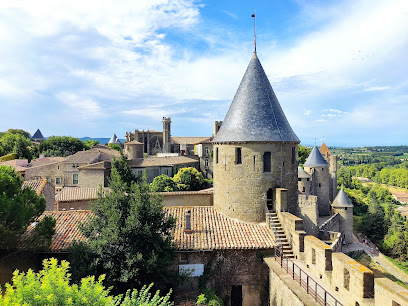
Pont du Gard
Discover the Pont du Gard, a stunning Roman aqueduct bridge in France, showcasing ancient engineering and breathtaking views of the surrounding landscape.
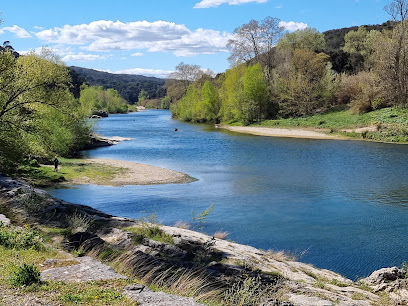
Towers and Walls of Aigues-Mortes
Explore the medieval marvel of Towers and Walls of Aigues-Mortes, where history and stunning scenery come together in the heart of France.
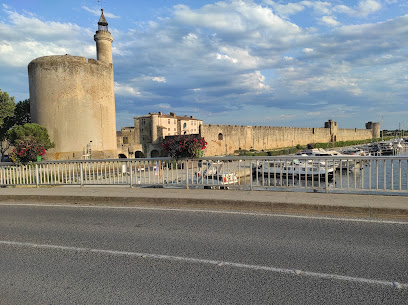
Haut-Languedoc Regional Natural Park
Explore the breathtaking landscapes and rich biodiversity of Haut-Languedoc Regional Natural Park, a true gem of southern France.
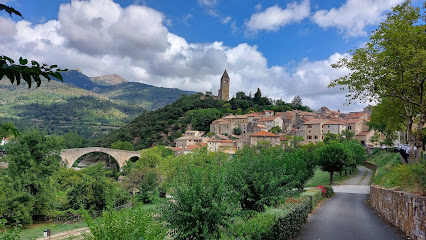
Royal Castle of Collioure
Explore the Royal Castle of Collioure, a stunning historical landmark with breathtaking views and rich heritage in a charming coastal town.

Salses Fortress
Explore the stunning Salses Fortress, a historical gem that showcases military architecture and offers breathtaking views of the surrounding landscape.

Palace of the Kings of Majorca
Explore the Palace of the Kings of Majorca - a historical landmark in Perpignan, France, showcasing Gothic architecture and stunning views.
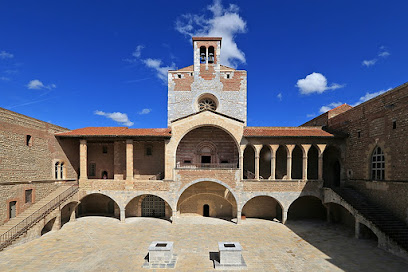
Sunset Beach
Experience the breathtaking sunsets and vibrant atmosphere at Sunset Beach in La Grande-Motte, the perfect Mediterranean getaway for relaxation and fun.
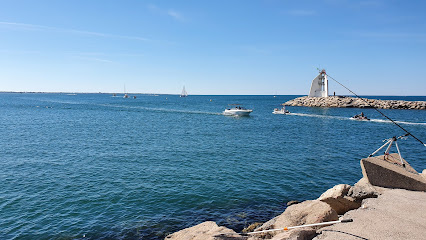
Château de Peyrepertuse
Discover the awe-inspiring Château de Peyrepertuse, a historic fortress offering breathtaking views and a deep dive into medieval history.
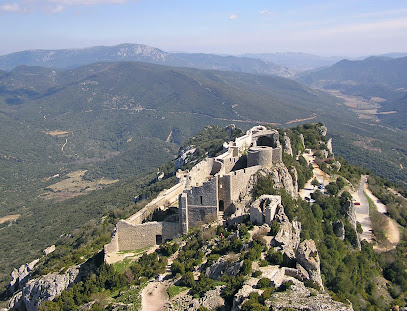
Tour Magne
Explore the majestic Tour Magne in Nîmes, a Roman monument offering stunning views and a deep dive into ancient history amidst beautiful gardens.
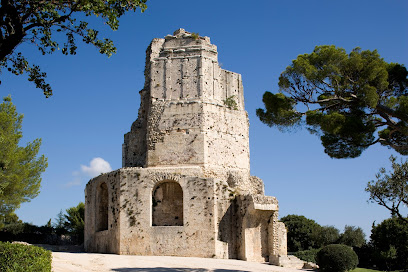
Château de Quéribus
Discover the captivating history and breathtaking views at Château de Quéribus, a majestic medieval fortress in the heart of France's stunning Languedoc region.
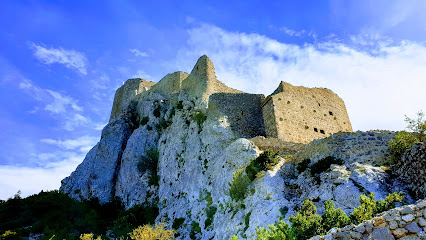
Montpellier Cathedral
Explore the architectural beauty and spiritual tranquility of Montpellier Cathedral, a must-visit landmark steeped in history and culture.
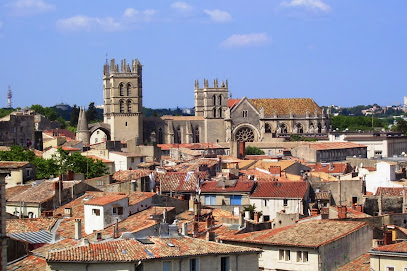
La Panacée
Explore La Panacée, Montpellier's leading art center, where contemporary creativity meets cultural engagement in a stunning historic setting.
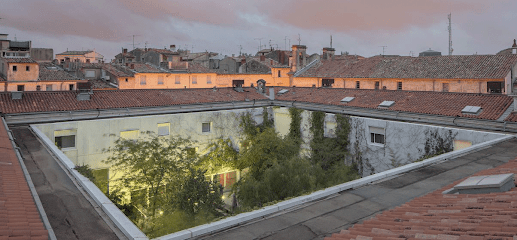
Château et remparts de la cité de Carcassonne
Discover the enchanting Château and Ramparts of Carcassonne, a medieval fortress in Southern France, rich in history and breathtaking views.

Aqueduc Saint-Clément
Explore the historical Aqueduc Saint-Clément in Montpellier, a beautiful architectural landmark showcasing 18th-century engineering brilliance.
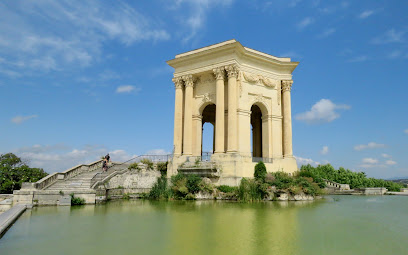
Unmissable attractions to see
Cité de Carcassonne
Explore the Cité de Carcassonne, a medieval fortress and UNESCO World Heritage site, rich in history and breathtaking views in southern France.
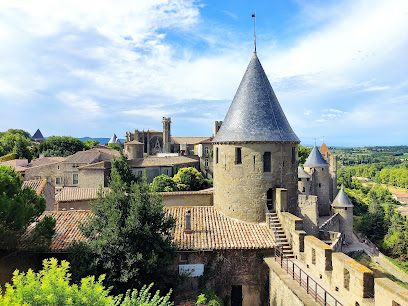
Les Halles de Narbonne
Discover the flavors of France at Les Halles de Narbonne, a vibrant market brimming with fresh produce, local delicacies, and culinary delights.
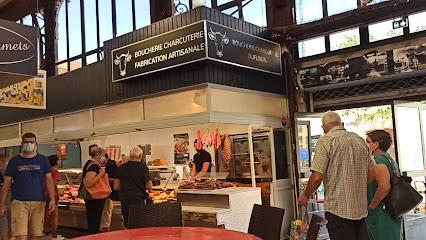
Les 9 Écluses de Fonseranes
Explore the historic Les 9 Écluses de Fonseranes in Béziers, a stunning engineering marvel along the Canal du Midi, rich in heritage and natural beauty.
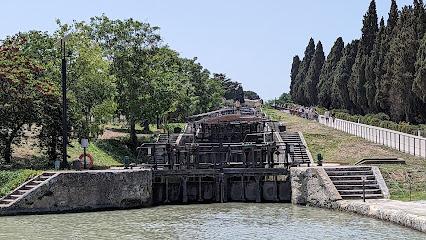
Le Salin de l'île Saint-Martin de Gruissan
Experience the unique landscapes and biodiversity of Le Salin de l'île Saint-Martin de Gruissan, a natural wonder on the Mediterranean coast.
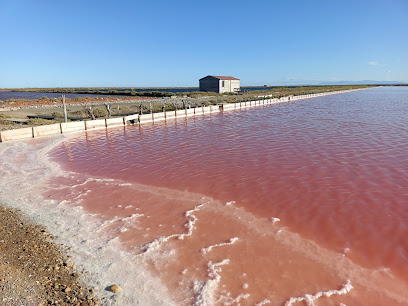
Haut-Languedoc Regional Natural Park
Experience the breathtaking beauty of Haut-Languedoc Regional Natural Park, where lush landscapes and vibrant wildlife create the perfect outdoor escape.
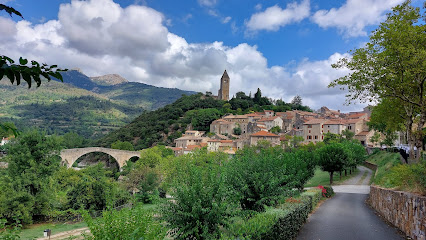
Clamouse cave
Unveil the wonders of Clamouse Cave, a breathtaking subterranean gem in France, showcasing nature's artistry and rich prehistoric history.
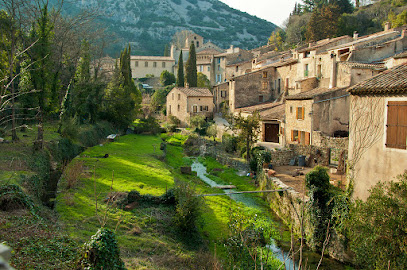
Sunset Beach
Discover Sunset Beach in La Grande-Motte: a paradise of golden sands, stunning sunsets, and vibrant coastal activities.
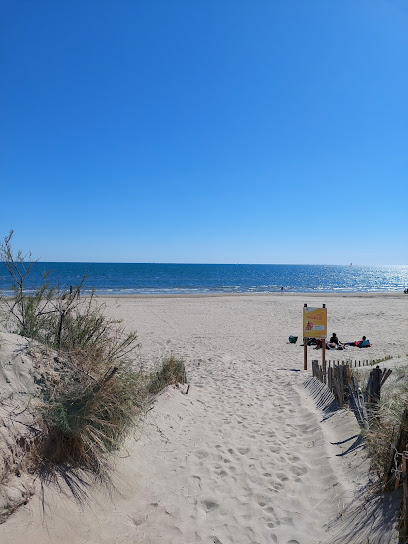
Gouffre Géant de Cabrespine
Explore the stunning Gouffre Géant de Cabrespine, a natural marvel in France featuring breathtaking caves and unique geological wonders.
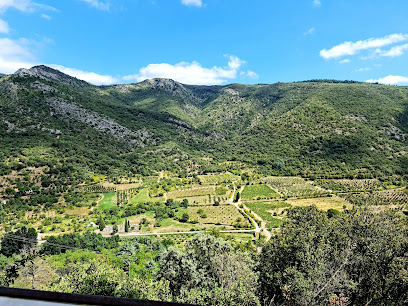
Grotte de la Cocalière
Discover the enchanting Grotte de la Cocalièré, a breathtaking cave in Courry, France, showcasing stunning geological formations and rich history.
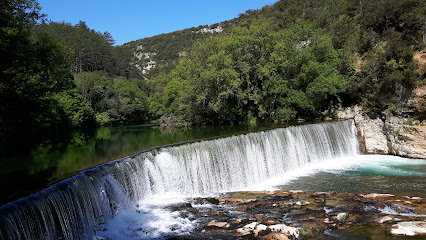
Château de Quéribus
Discover the breathtaking Château de Quéribus, a medieval fortress that offers stunning views and rich history in the heart of the Corbières region.
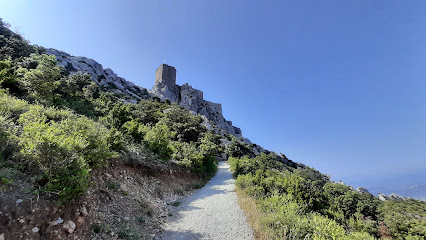
Plage Rive Gauche
Discover the sun-soaked beauty of Plage Rive Gauche in Le Grau-du-Roi, where golden sands meet azure waters for an unforgettable beach experience.
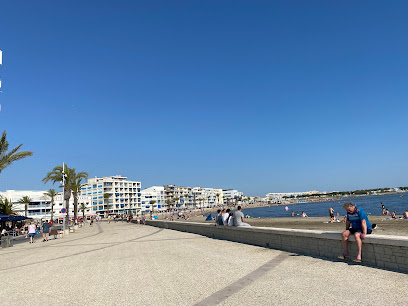
Parc d'attraction Marseillan plage
Experience the thrill of rides, laughter, and unforgettable moments at Parc d'attraction Marseillan Plage, the ultimate family amusement park in the heart of Marseillan.

Caves of Trabuc
Discover the enchanting Caves of Trabuc in Mialet, France, where stunning limestone formations create an unforgettable underground adventure.
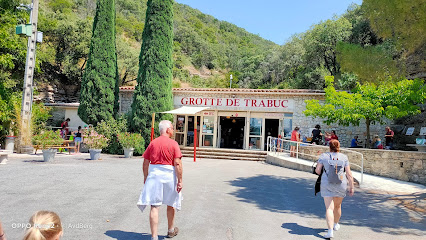
Babyland
Experience thrilling rides, engaging games, and enchanting shows at Babyland, the ultimate family amusement park in Le Grau-du-Roi, France.
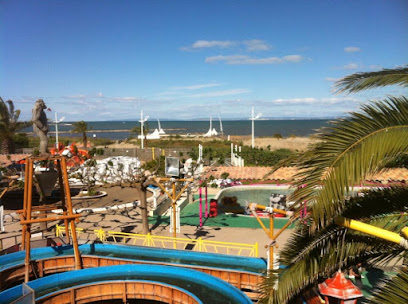
Grotte de Limousis
Explore Grotte de Limousis, a stunning natural cave in Limousis, France, rich in geological wonders and breathtaking beauty for all adventure lovers.
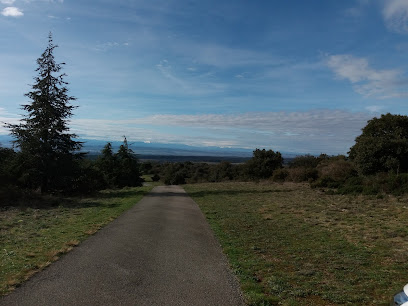
Essential places to dine
Restaurant L'ecluse Beziers
Experience exquisite French and Mediterranean cuisine at Restaurant L'Ecluse in Villeneuve-lès-Béziers – perfect for dining or celebrating special occasions.
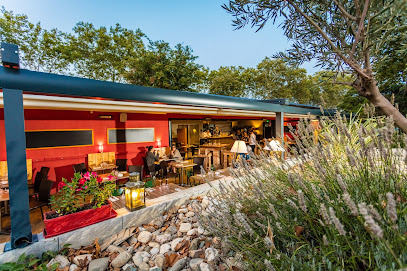
Restaurant Le Neptune
Discover exquisite French cuisine at Restaurant Le Neptune in Collioure with breathtaking Mediterranean views.
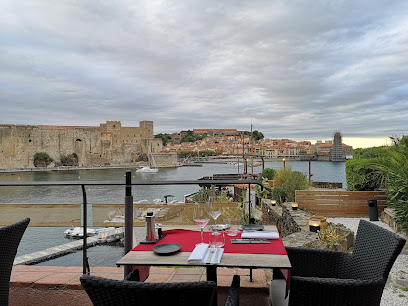
Restaurant l'Auberge Provencale
Experience authentic Mediterranean and French cuisine at Restaurant l'Auberge Provencale in Valras-Plage's scenic coastal atmosphere.
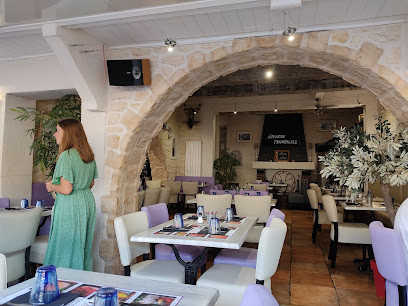
L' OSCARINE
Experience authentic French cuisine at L' OSCARINE in Mèze - where local flavors meet Mediterranean charm.

Auberge de la Croisade
Experience authentic French cuisine at Auberge de la Croisade, where local flavors meet charming ambiance in Cruzy's picturesque setting.
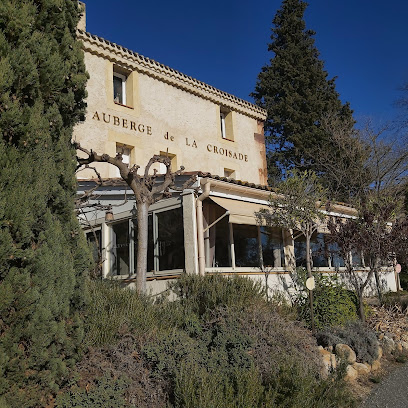
Les Enfants Terribles
Experience authentic French and Mediterranean cuisine at Les Enfants Terribles in Villeneuve-lès-Béziers – a culinary gem not to be missed!
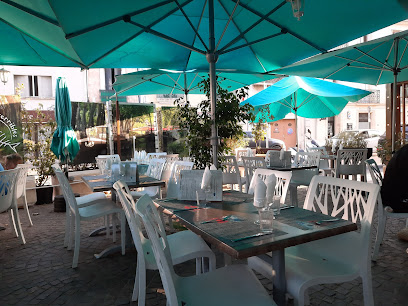
Les Ondines
Experience the best of French and Mediterranean cuisine at Les Ondines with breathtaking seaside views in Agde.

Auberge du Vieux Puits - Gilles Goujon
Experience culinary artistry at Auberge du Vieux Puits - a fine dining destination in Fontjoncouse offering exquisite French cuisine and warm hospitality.
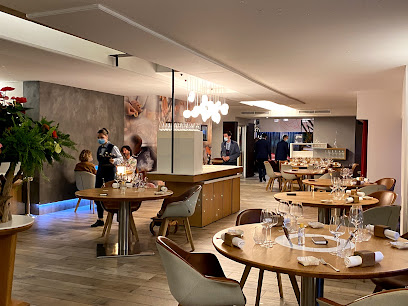
L'oustal fonzes - Le Cabanon
Savor exquisite French and Mediterranean cuisine at L'oustal fonzes - Le Cabanon in Saint-Guilhem-le-Désert's charming ambiance.
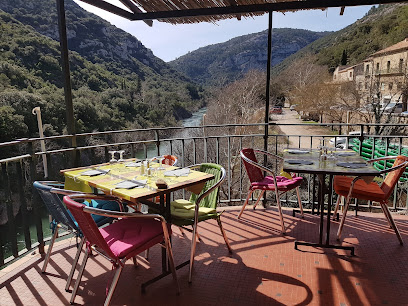
La Table Saint Crescent
Discover the elegance of fine dining at La Table Saint Crescent in Narbonne, where exquisite French cuisine meets exceptional service.
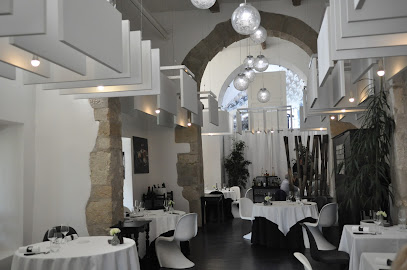
LA TABLE D' EMILIE
Experience authentic French cuisine at La Table d'Emilie in Marseillan - where tradition meets contemporary flair.
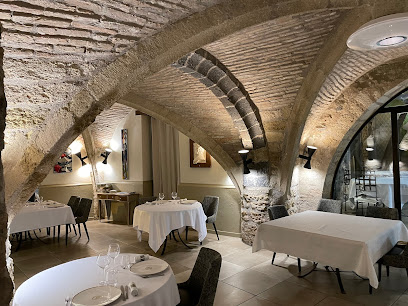
Ô Grain de Sel
Experience exquisite French and Mediterranean cuisine at Ô Grain de Sel in Agde - a must-visit seafood haven by the sea.
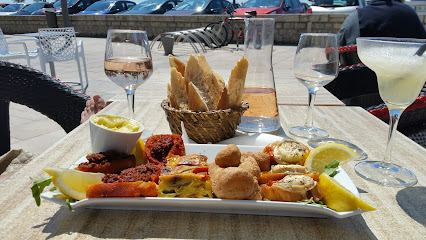
LE BOUCHON CATALAN
Experience traditional French cuisine and fine wines at Le Bouchon Catalan in Canet-en-Roussillon - a must-visit culinary destination.
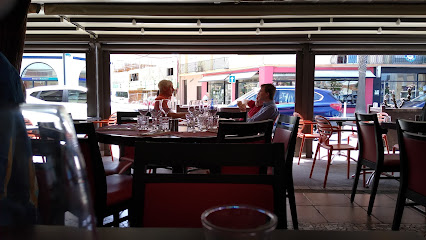
Restaurant L'Almandin
Experience exquisite Haute French cuisine at Restaurant L'Almandin in beautiful Saint-Cyprien, where culinary artistry meets elegance.
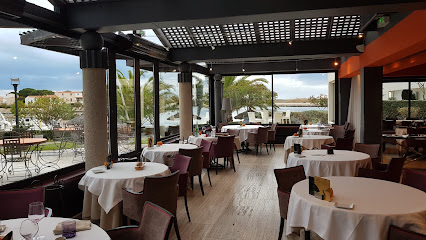
l'ambrosia
Experience exquisite French and Mediterranean cuisine at L'Ambrosia in Pezens - where culinary art meets warm hospitality.
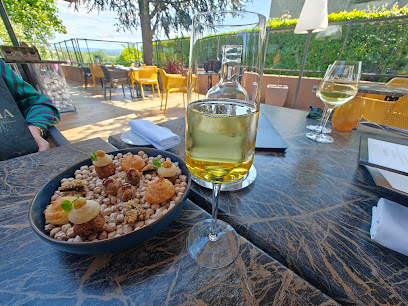
Markets, malls and hidden boutiques
Shopping Centre Odysseum
Experience a world of shopping, dining, and entertainment at Shopping Centre Odysseum in Montpellier, where every visit is an adventure.

Centre Commercial Le Polygone
Discover shopping, dining, and entertainment at the lively Centre Commercial Le Polygone in Montpellier, the ultimate destination for tourists.
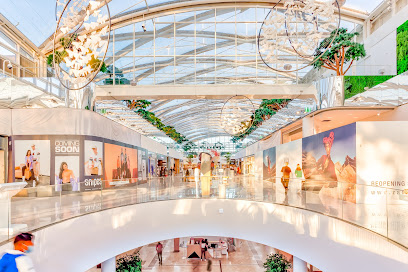
Polygone Béziers
Discover Polygone Béziers, a bustling shopping mall with diverse shops, delightful dining, and vibrant entertainment for the perfect day out in Béziers.
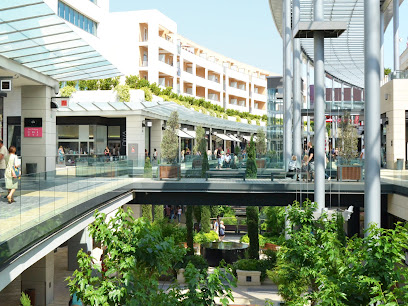
La Galerie
Explore La Galerie in Narbonne: A vibrant shopping mall offering everything from fashion boutiques to fast food, perfect for tourists and locals alike.
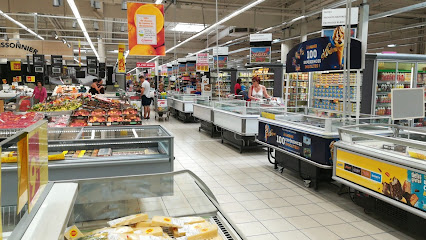
Galeries Lafayette
Experience the best of shopping in Montpellier at Galeries Lafayette, where fashion, beauty, and home goods meet in a luxurious setting.

La Galerie - Géant Près d'Arènes
Explore La Galerie - Géant Près d'Arènes, Montpellier's premier shopping mall with a wide variety of stores and dining options for every taste.
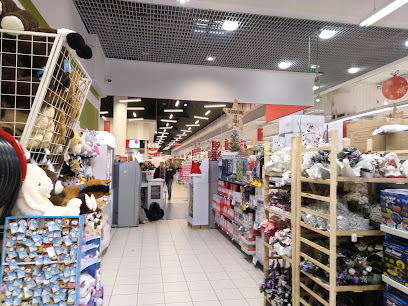
La Galerie - Géant Salvaza
Discover La Galerie - Géant Salvaza, a bustling shopping mall in Carcassonne with diverse stores, dining options, and a vibrant atmosphere for all ages.

Action Béziers
Explore Action Béziers for a unique shopping experience featuring gifts, home goods, and DIY supplies in the heart of Béziers, France.
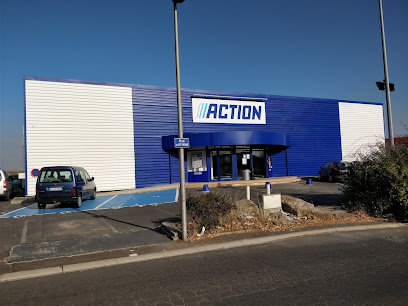
Galeries Lafayette Beziers
Explore a shopping paradise at Galeries Lafayette Béziers, where fashion, beauty, and local culture beautifully converge.
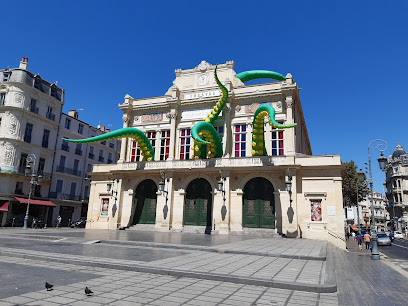
La Foir'Fouille
Discover La Foir'Fouille in Agde for an extensive selection of home goods, garden furniture, and unique gifts to enhance your travel experience.
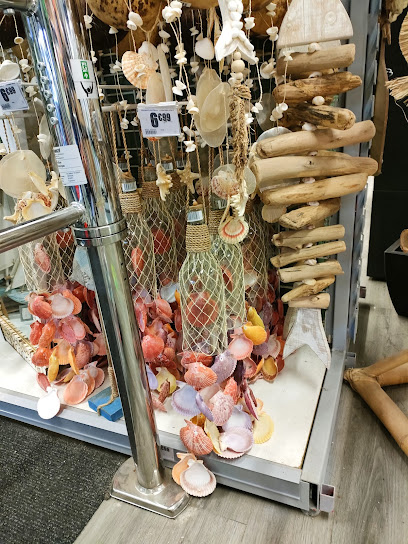
B&M
Explore B&M in Pérols, your ultimate destination for gifts, home goods, and unbeatable discounts in a friendly shopping environment.
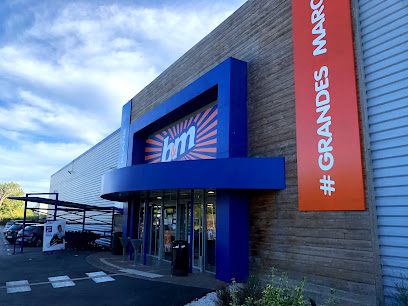
ACTION
Explore ACTION in Colombiers for a unique shopping experience with gifts, DIY supplies, and home goods that capture the spirit of France.
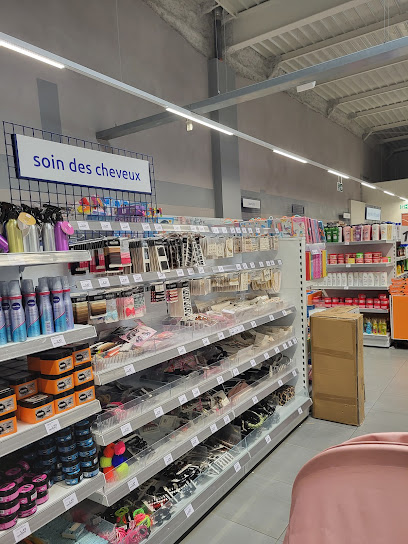
Grande récré (la)
Discover the magic of play at Grande Récré, Montpellier's premier toy store with an endless selection of fun and educational toys for all ages.
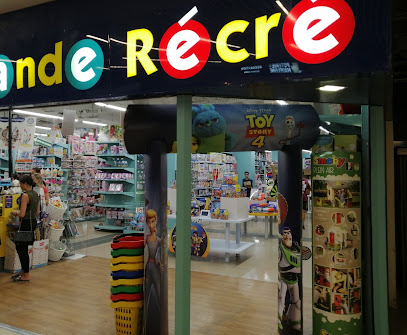
Galeries Lafayette - Corner Cosmoparis
Explore Galeries Lafayette - Corner Cosmoparis in Perpignan for chic fashion accessories, handbags, and shoes that define your personal style.
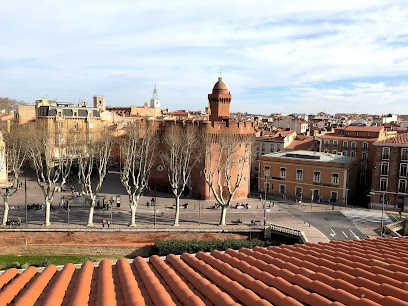
LE MOMENT GOURMAND
Explore the essence of Languedoc-Roussillon at Le Moment Gourmand, where gourmet delights and local flavors await every visitor.
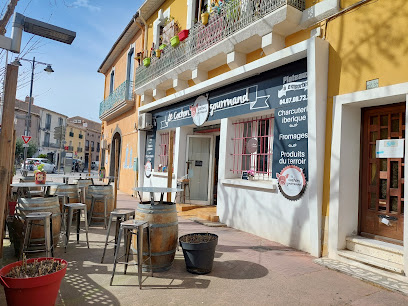
Essential bars & hidden hideouts
Fitzpatrick's Irish Pub
Discover Fitzpatrick's Irish Pub in Montpellier, where authentic Irish cuisine meets a lively atmosphere and sports excitement.
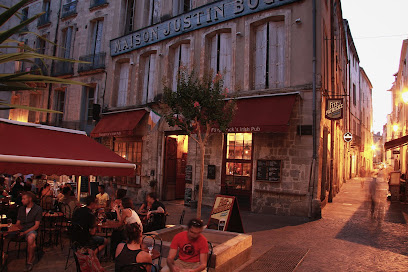
Le Carré Rouge
Discover the lively Le Carré Rouge in Agde, a cocktail bar offering creative drinks, stunning views, and vibrant nightlife for an unforgettable experience.
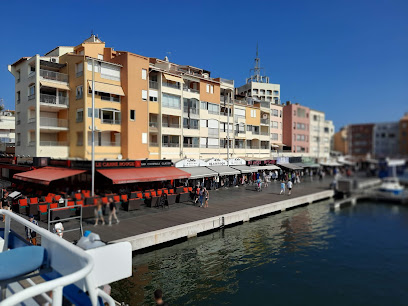
LE PATIO LATTES
Discover the lively spirit of Le Patio Lattes, where great food meets vibrant nightlife in a captivating bar and dance hall experience.

Le Parfum
Experience the perfect fusion of Cantonese cuisine and masterfully crafted cocktails at Le Parfum, Montpellier's premier cocktail bar.

Le Rebuffy
Experience the vibrant nightlife of Montpellier at Le Rebuffy Pub, a local favorite for craft beers and lively atmosphere.

THE MUSTANG MONTPELLIER
Experience the vibrant nightlife at The Mustang Montpellier, a premier cocktail bar offering creative drinks and a lively atmosphere.
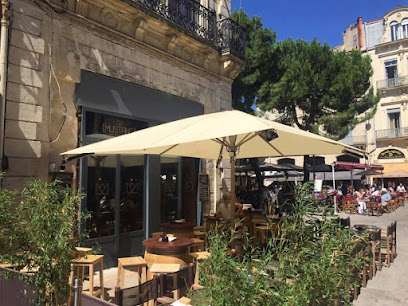
L'Imprévu
Experience the vibrant flavors of Portiragnes at L'Imprévu, a restaurant that combines local cuisine with a lively lounge atmosphere.
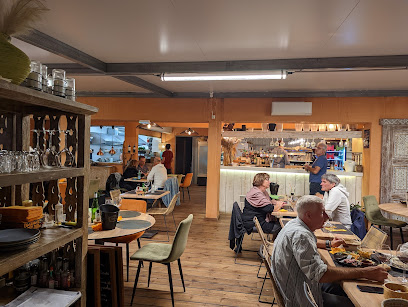
TIKI Restaurant Bar
Experience the vibrant flavors of TIKI Restaurant Bar in Sérignan, where gourmet gastropub cuisine meets delicious pizza in a lively atmosphere.
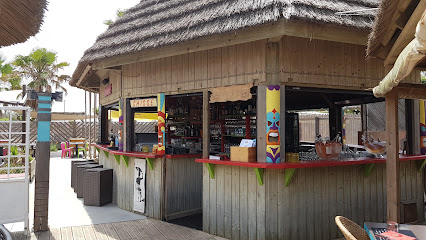
Mango's Beach Bar
Discover Mango's Beach Bar in Cap D’Agde: a vibrant restaurant and bar offering delicious food, refreshing cocktails, and stunning Mediterranean views.
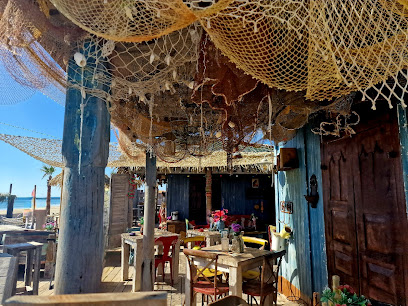
Black Pearl
Experience the lively ambiance at Black Pearl in Agde, a perfect bar for unwinding with drinks and enjoying local nightlife.
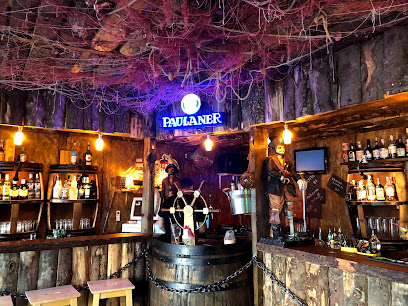
bambù bar
Discover the vibrant nightlife at Bambù Bar in Canet-en-Roussillon, offering an array of drinks and a lively atmosphere for a memorable evening.
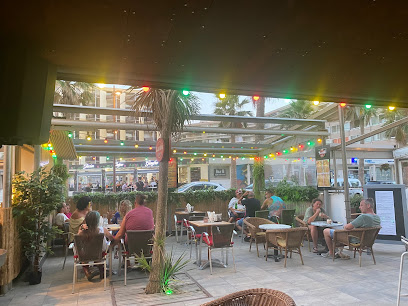
Le Clandestin
Discover the flavors of Montpellier at Le Clandestin, a wine bar offering a curated selection of local wines in a cozy atmosphere.
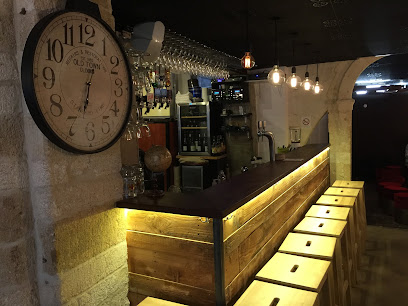
Los Parigos
Discover the heart of Montpellier's nightlife at Los Parigos, where vibrant drinks and a lively atmosphere await every evening.
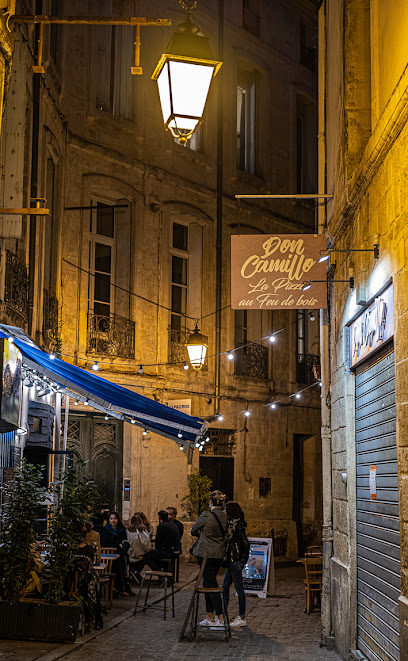
Kraken bar
Discover Kraken Bar in Montpellier: a cocktail oasis with a lively atmosphere and exceptional drinks, perfect for a memorable night out.
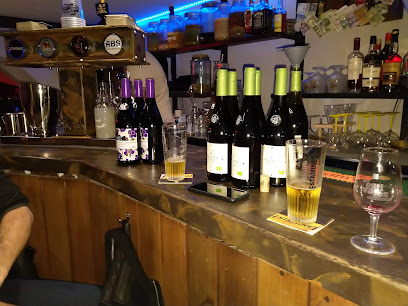
The Peacock
Discover the vibrant atmosphere of The Peacock, a cocktail bar in Montpellier known for its exquisite drinks, live music, and lively social scene.
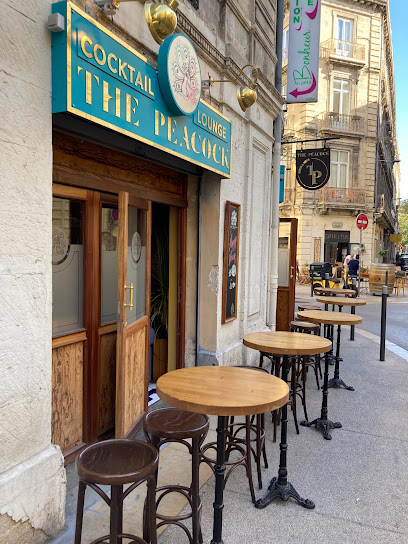
Local Phrases about Languedoc Coast
-
- HelloBonjour
[bon-zhoor] - GoodbyeAu revoir
[oh ruh-vwahr] - YesOui
[wee] - NoNon
[nohn] - Please/You're welcomeS'il vous plaît / De rien
[seel voo pleh / duh ryehn] - Thank youMerci
[mehr-see] - Excuse me/SorryExcusez-moi / Désolé
[ex-kew-zay mwah / day-zo-lay] - How are you?Comment ça va?
[ko-mon sah vah] - Fine. And you?Bien. Et vous?
[byen. ay voo] - Do you speak English?Parlez-vous anglais?
[par-lay voo ahn-glay] - I don't understandJe ne comprends pas
[zhuh nuh kohm-prahnd pah]
- HelloBonjour
-
- I'd like to see the menu, pleaseJe voudrais voir le menu, s'il vous plaît
[zhuh voo-dray vwahr luh muh-nyuh, seel voo pleh] - I don't eat meatJe ne mange pas de viande
[zhuh nuh mahnj pah duh vyand] - Cheers!Santé!
[sahn-tay] - I would like to pay, pleaseJe voudrais payer, s'il vous plaît
[zhuh voo-dray pay-yay, seel voo pleh]
- I'd like to see the menu, pleaseJe voudrais voir le menu, s'il vous plaît
-
- Help!À l'aide!
[a layd] - Go away!Allez-vous-en!
[ah-lay voo zahn] - Call the Police!Appelez la police!
[ah-pleh lah poh-lees] - Call a doctor!Appelez un médecin!
[ah-pleh uh meh-deh-sahn] - I'm lostJe suis perdu
[zhuh swee pehr-doo] - I'm illJe suis malade
[zhuh swee mah-lahd]
- Help!À l'aide!
-
- I'd like to buy...Je voudrais acheter...
[zhuh voo-dray zah-shay...] - I'm just lookingJe regarde juste
[zhuh ruh-gard zhewst] - How much is it?Combien ça coûte?
[kohm-byen sah koot] - That's too expensiveC'est trop cher
[say troh shehr] - Can you lower the price?Pouvez-vous baisser le prix?
[poo-veh voo beh-say luh pree]
- I'd like to buy...Je voudrais acheter...
-
- What time is it?Quelle heure est-il?
[kel uhr eh-teel] - It's one o'clockIl est une heure
[eel eh tun uhr] - Half past (10)Dix et demi
[dees ay duh-mee] - MorningMatin
[ma-tahn] - AfternoonAprès-midi
[ah-pray mee-dee] - EveningSoir
[swahr] - YesterdayHier
[yehr] - TodayAujourd'hui
[oh-zhoor-dwee] - TomorrowDemain
[duh-man] - 1Un
[uhn] - 2Deux
[duh] - 3Trois
[twah] - 4Quatre
[kah-truh] - 5Cinq
[sank] - 6Six
[sees] - 7Sept
[sept] - 8Huit
[weet] - 9Neuf
[nuhf] - 10Dix
[dees]
- What time is it?Quelle heure est-il?
-
- Where's a/the...?Où est...?
[oo eh...] - What's the address?Quelle est l'adresse?
[kel eh lah-dress] - Can you show me (on the map)?Pouvez-vous me montrer (sur la carte)?
[poo-veh voo muh mohn-tray (soor lah kart)] - When's the next (bus)?Quand est le prochain (bus)?
[kahn eh luh proh-shahn (bus)] - A ticket (to ....)Un billet (pour ....)
[uhn bee-yay (poor)]
- Where's a/the...?Où est...?
History of Languedoc Coast
-
The Languedoc Coast, or 'Languedoc-Roussillon' as it is also known, bears the indelible marks of Roman occupation. The ancient city of Narbonne, founded in 118 BC, became a thriving port and a vital link between Italy and Spain. The remnants of the Via Domitia, the Roman road that connected Italy to Hispania, can still be seen, as well as the impressive Horreum, an underground warehouse dating back to the 1st century BC.
-
The Languedoc region was a stronghold of the Cathars, a Christian dualist or Gnostic revival movement that thrived in the 12th and 13th centuries. The fortified city of Carcassonne, with its double-walled fortifications and 53 towers, serves as a testament to this turbulent era. The Albigensian Crusade, launched by the Catholic Church to eradicate Catharism, led to significant bloodshed and the eventual fall of the Cathar strongholds.
-
Commissioned by King Louis XIV and completed in 1681, the Canal du Midi is a marvel of engineering and a UNESCO World Heritage site. Designed by Pierre-Paul Riquet, the canal stretches from Toulouse to the Mediterranean Sea at Sète, transforming trade and travel in the region. The canal features 328 structures, including locks, aqueducts, and bridges, and remains a popular route for leisurely barge cruises.
-
The Languedoc region is one of the oldest wine-producing areas in France, with a history that dates back to the Roman era. However, it was in the 19th century that viticulture truly flourished. The region's diverse microclimates and soil types contribute to the production of a wide variety of wines, from robust reds to crisp whites. The 'Vin de Pays d'Oc' designation has helped elevate the reputation of Languedoc wines on the global stage.
-
Occitan, a Romance language spoken in southern France, has had a profound influence on the culture of the Languedoc Coast. During the Middle Ages, the troubadours, poets, and musicians who composed in Occitan played a crucial role in the development of European literature. Although French has largely supplanted Occitan as the dominant language, efforts to preserve and revive Occitan culture continue to this day.
-
Béziers, one of the oldest cities in France, boasts a rich architectural heritage. The city's Cathedral of Saint-Nazaire, built between the 13th and 15th centuries, offers stunning views over the Orb River. The Pont Vieux, a Romanesque bridge dating back to the 12th century, and the impressive locks of Fonseranes on the Canal du Midi are other highlights. Béziers is also known for its vibrant Feria, a festival that celebrates the region's bullfighting traditions.
-
Originally established in 1666 as a port for the Canal du Midi, Sète has grown into a bustling maritime city. It is often referred to as the 'Venice of Languedoc' due to its network of canals. The city is renowned for its seafood cuisine, particularly the local specialty 'Tielle,' an octopus pie. Sète's cultural scene is vibrant, with numerous festivals, including the famous 'Fête de la Saint-Louis,' which features thrilling water jousting competitions.
Languedoc Coast Essentials
-
The Languedoc Coast is easily accessible by various means of transportation. The nearest major international airport is Montpellier-Méditerranée Airport (MPL), which is well-connected to major European cities. From the airport, you can take a taxi, shuttle bus, or rent a car to reach your destination along the coast. Alternatively, you can arrive by train; the TGV high-speed trains connect Paris to Montpellier and other coastal towns like Sète, Agde, and Narbonne. Regional TER trains are also available for shorter trips within the region. If you prefer driving, the A9 and A75 motorways provide convenient road access to the Languedoc Coast.
-
Public transportation on the Languedoc Coast is efficient and convenient. The region is served by an extensive network of buses and trains that connect major towns and cities. For local travel, buses operated by Hérault Transport and other regional companies are reliable and frequent. Taxis and ride-sharing services like Uber are also available, though more expensive. Renting a car is a great option for exploring more remote areas and offers the flexibility to visit vineyards, beaches, and historical sites at your own pace. Bicycles are popular in coastal towns, and many places offer bike rentals.
-
The official currency in France is the Euro (EUR). Credit and debit cards are widely accepted in hotels, restaurants, and shops along the Languedoc Coast. ATMs are readily available in urban and tourist areas for cash withdrawals. It is advisable to carry some cash for small purchases, especially in rural markets and smaller establishments that may not accept cards. Contactless payments are becoming increasingly common and are accepted in many places.
-
The Languedoc Coast is generally a safe destination for tourists. However, like any popular tourist area, it is important to be vigilant about petty crime such as pickpocketing, especially in crowded places like markets and public transport. Areas with higher crime rates targeting tourists include parts of Montpellier's city center and some beach areas during peak season. Avoid isolated places at night, and always keep your belongings secure. Emergency numbers to know are 112 for general emergencies and 17 to reach the police.
-
In case of an emergency, dial 112 for immediate assistance. This number can be used for police, medical, and fire emergencies. Hospitals and clinics are available in major towns and cities along the Languedoc Coast, such as Montpellier, Sète, and Narbonne. It is recommended to have travel insurance that covers medical emergencies. Pharmacies are common and usually marked with a green cross; they can provide over-the-counter medications and advice for minor health issues.
-
Fashion: Do dress comfortably but stylishly. Avoid overly casual attire when dining out; smart-casual is often the norm. Religion: Do respect religious sites by dressing modestly and observing silence where required. Public Transport: Do validate your tickets upon boarding buses and trains. Don't eat or drink on public transport. Greetings: Do greet people with a 'Bonjour' (Good day) when entering shops or restaurants. A handshake is a common greeting. Eating & Drinking: Do try local wines and seafood. Don't rush through meals; dining is a leisurely and social activity in this region.
-
To experience the Languedoc Coast like a local, visit the weekly markets in towns such as Sète, Pézenas, and Narbonne to buy fresh produce, artisanal goods, and local wines. Engage with locals, who are often friendly and eager to share information about their region. Take advantage of the region's extensive vineyard tours and wine tastings to sample local varietals. Enjoy a leisurely lunch at a beachfront café or a traditional brasserie. Explore lesser-known beaches and natural parks for a more tranquil experience. Don't miss the local festivals and events that showcase the region's rich cultural heritage.
Trending Landmarks in Languedoc Coast
-
Cité de Carcassonne
-
Pont du Gard
-
Towers and Walls of Aigues-Mortes
-
Haut-Languedoc Regional Natural Park
-
Royal Castle of Collioure
-
Salses Fortress
-
Palace of the Kings of Majorca
-
Sunset Beach
-
Château de Peyrepertuse
-
Tour Magne
-
Château de Quéribus
-
Montpellier Cathedral
-
La Panacée
-
Château et remparts de la cité de Carcassonne
-
Aqueduc Saint-Clément
Nearby Cities to Languedoc Coast
-
Things To Do in Nîmes
-
Things To Do in Avignon
-
Things To Do in Toulouse
-
Things To Do in Pas de la Casa
-
Things To Do in Soldeu
-
Things To Do in Marseille
-
Things To Do in Canillo
-
Things To Do in Aix-en-Provence
-
Things To Do in El Serrat
-
Things To Do in Ordino
-
Things To Do in Encamp
-
Things To Do in Girona
-
Things To Do in La Massana
-
Things To Do in Arinsal
-
Things To Do in Escaldes-Engordany



